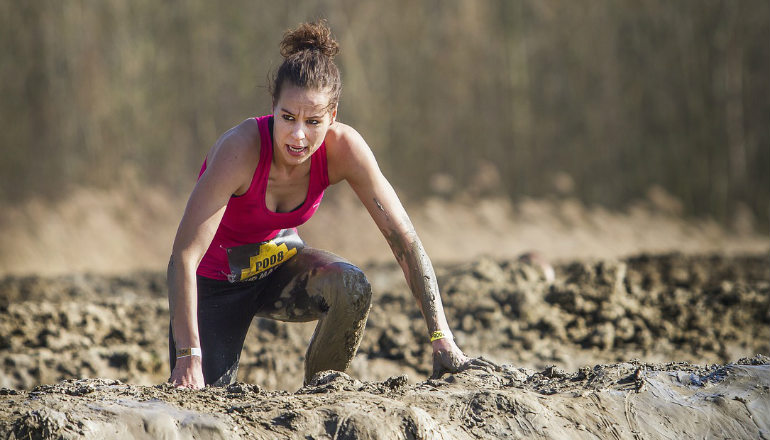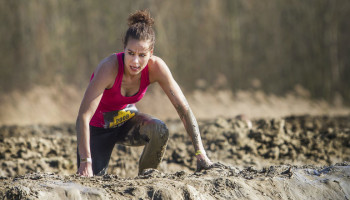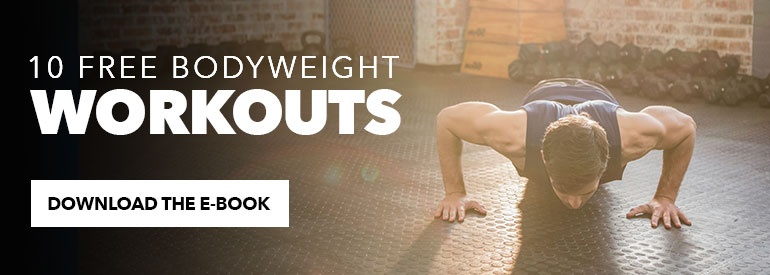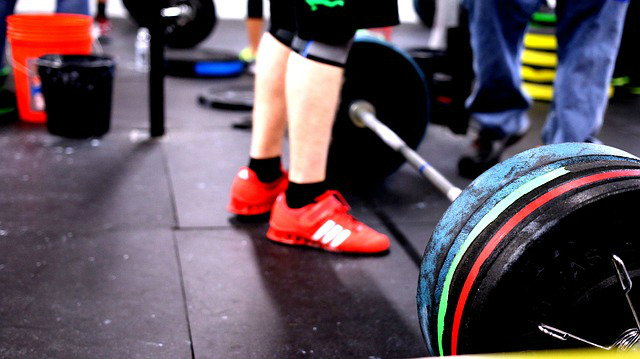 Reading Time: 6 minutes
Reading Time: 6 minutes“Every positive change — every jump to a higher level of awareness — involves a rite of passage. Each time to ascend to a higher rung of the ladder of personal evolution, we must go through a period of discomfort, of initiation. I have never found an exception.” — Dan Millman, author of Way of the Peaceful Warrior
During the first part of my fitness career, I regularly taught spin classes. I was a tough instructor, but I also used humor and sarcasm to motivate and entertain. I would say things like, “I don’t care if you actually do the work or fake it until you make it, but at least show me you’re trying!” Another snappy remark I sometimes said was, “You can have the fans turned on after you’ve earned it!”
After I had barked out one of these smart-aleck statements one morning, a new class participant didn’t find it very amusing and complained to club management. Tail between my legs, I apologized to the member for my tone.
In retrospect, I was a bit misguided in the in-your-face manner in which I said things to my fitness clients and classes back then. That said, I stand by the sentiment that underlined my comments — change and growth (whether physical, emotional, or professional) are sweaty, hot, messy, and grueling. The reality is, there is no such thing as being comfortably uncomfortable. Real growth doesn’t come with air conditioning.
Why Humans Want to Get Comfortable
Still, I’ve long since changed my tone from “suck it up, buttercup” to one of empathy and understanding. While I may face the discomfort of exercise more easily than some, in other arenas of my life I struggle big time with getting out of my comfort zone.
I am a master procrastinator, I like my afternoon naps, and I love my mom’s cookies and my wife’s Southern cooking. I dig a leisurely and lazy morning. I like a cool breeze on a hot summer day, a comfy pair of sweats, and a refreshing beer while kicking back on the beach.
It’s human nature to seek comfort and even the most motivated among us like to relax every now and then. Whether considered as a verb (to soothe, console) or as a noun (relief, a state of ease/relaxation), the notion of “comfort” is something we all relish on some level.
But the paradox is that while comfort is unquestionably desirable, we also need the discomfort of change to thrive and grow.
What’s on the Other Side of Discomfort
“Comfort zones are most often expanded through discomfort” — Peter McWilliams
The Latin root of the word comfort is confortare, meaning “to strengthen.” But we tend to think of comfort as smooth and easy, whereas strength is typically associated with words like “resistance,” “courage,” and “toughness.”
We don’t necessarily think of laying on a beach, taking a nap, or getting a massage as activities that make us stronger. But recovery is where much of our growth and strengthening happens — if, and only if, we do the uncomfortable work first. As my wife reminds me when we’re doing chores, “Work time is not play time, and work comes first!”
But consider that if you approach your “work” as craft, then work and play can end up being one and the same. Another way to think about it is “work before play until work becomes play.” This yin-yang phenomenon is commonly seen with high-level athletes. Whether you call it “being in the zone” or “a state of flow,” some masters can make even their most intense efforts look almost effortless — or, dare I say, comfortable.
Make no mistake, though: it takes years of work to bring this state to fruition, and peace is on the other side of the discomfort, not in the distraction from it.
The mystic poet Rumi once said, “The cure for pain is in the pain.” And author Ryan Holiday reminds us that “The obstacle is the way.” After my divorce, my spiritual director similarly advised me to “lean into the pain.” Deep down, we know that facing the pain and the doing the work is the only way to get to a state of true comfort.
Pain Is Not Discomfort
There is a caveat when it comes to the word “pain,” as the lines between discomfort and actual pain can become blurry at times. “No pain, no gain” has been a sport and fitness mantra for decades. For example, a common practice of old-school coaches was to withhold water from players, thus exposing their athletes to heat exhaustion or worse. This kind of “discomfort” is not okay. Discomfort is not synonymous with actual pain and understanding the difference is vital.
Dangerous training and playing through pain are not the same as you not “liking” the feeling of sweating profusely on a hot day or not having the air conditioning just right for your cardio workout. Muscle (lactic acid) burn is not pain, but sharp knee pain is. Breathing hard is not pain, but being lightheaded potentially is. There’s a subtle but important distinction between actual trauma and suffering for the sake of growth.
Results vs. Preference
Part of the inherent problem for those of us working as instructors in fitness is that the workouts we choose or are presented with are often based on customer feedback, preferences, and “likes.” At face value, running a business this way seems to make total sense. After all, the success of a restaurant or hair salon is predicated on the customers having it their way.
But in the business of fitness, long-term success equates to client results, not client preference.
In every arena of life, achieving and sustaining goals means taking on the willingness to face adversity and get uncomfortable. This is particularly true when it comes to attaining wellness. Think about when you go to the doctor: you aren’t necessarily concerned about whether you are comfortable. Instead you are concerned with whether your health is properly being assessed and addressed.
Why should it be any different when it comes to your fitness?
For Change: We Can’t Remain Comfortable
The desire to be comfortable juxtaposed with the necessity for growth is perhaps the major paradox of human nature — and a metaphor for life that we all grapple with. Growth occurs in the ebb and flow of push-pull, intensity-relaxation, and comfort-discomfort.
Real success in fitness (and elsewhere) is about addressing your needs, not your wants. So, the next time you’re wrestling with not having it your way at the gym, during your workout, or in an exercise class, quietly remind yourself that true gratification and lasting comfort only occurs by doing the uncomfortable work of facing yourself.













